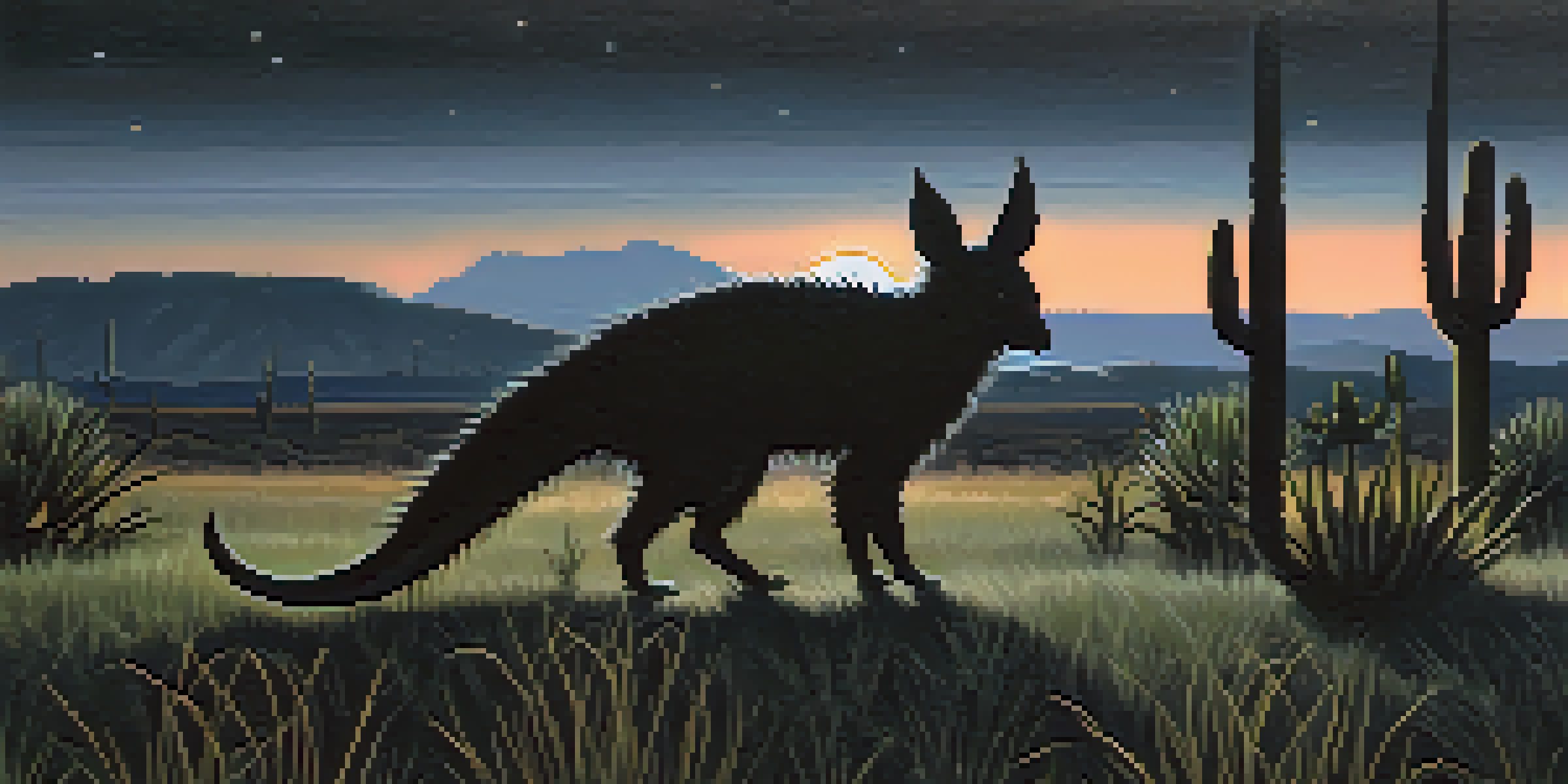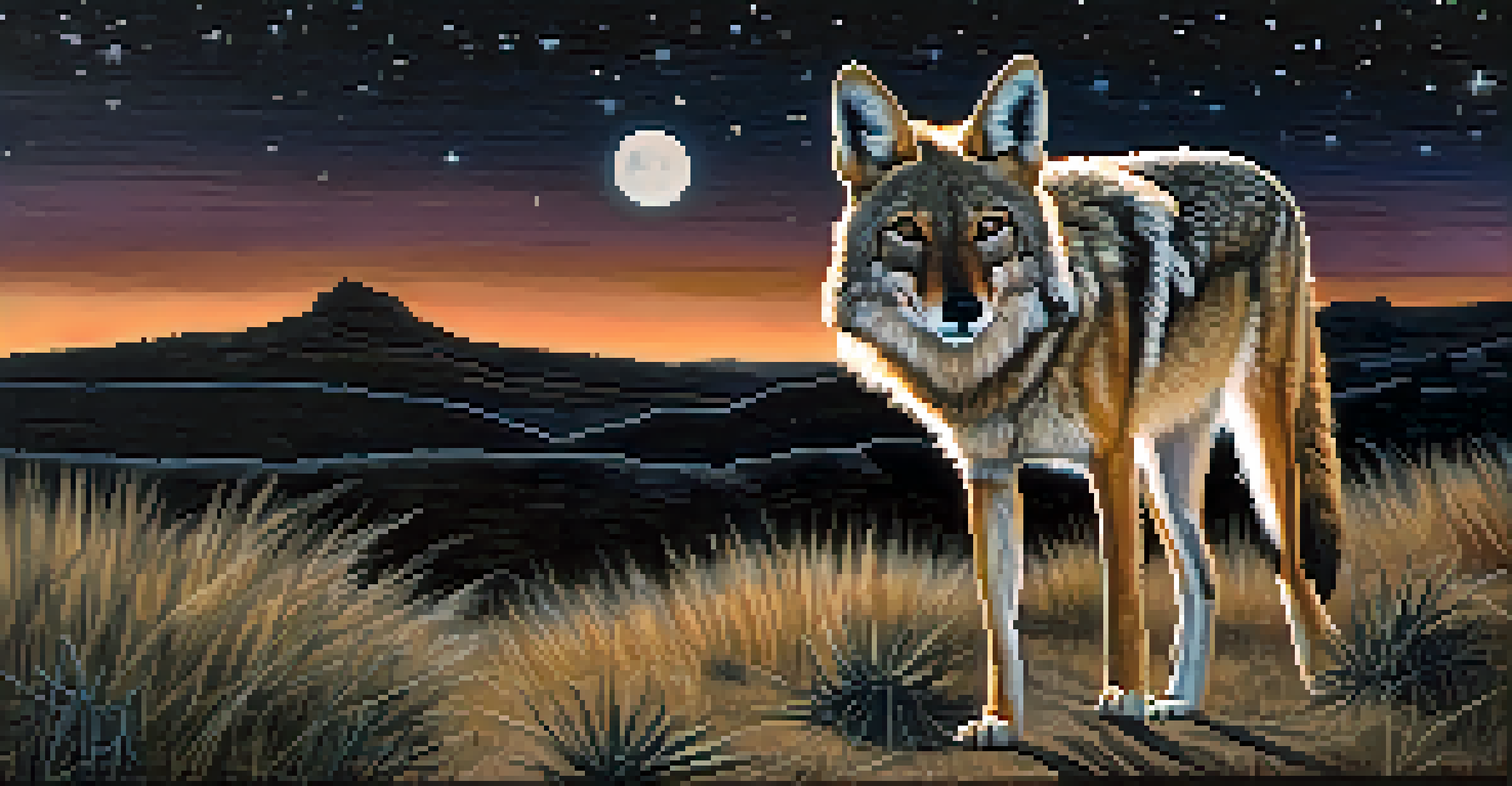The Legend of the Texas Chupacabra: Austin's Scary Tale

Introduction to the Chupacabra Legend in Texas
The Chupacabra, a creature shrouded in mystery, has become a staple of urban legend in Texas. With its strange name translating to 'goat-sucker' in Spanish, this mythical beast is said to prey on livestock, particularly goats. It first gained notoriety in the 1990s, with reports primarily surfacing from Puerto Rico, but soon made its way to the Lone Star State, captivating the imagination of many.
The unknown is what makes life interesting; it gives us stories to tell and legends to believe in.
In Austin, tales of the Chupacabra have sparked both fear and intrigue among residents. The legend often describes a creature with spines along its back, glowing eyes, and a thirst for blood. Whether you’re a believer or a skeptic, the story of the Chupacabra has woven itself into the fabric of local folklore, making it a topic of conversation during campfires and late-night gatherings.
As we delve deeper into this legend, we'll explore its origins, the various sightings reported in Austin, and the cultural impact it has had on the community. Buckle up, because this spooky tale is sure to send chills down your spine!
Origins of the Chupacabra Myth
The Chupacabra legend can be traced back to Puerto Rico in the mid-1990s, where it was first reported after a series of livestock killings. Farmers found their goats drained of blood, leading to speculation about a mysterious creature responsible for these gruesome acts. This bizarre phenomenon captured the attention of the media, and stories quickly spread across borders, reaching Texas and beyond.

In Texas, the legend evolved as residents began to share their own sightings and experiences. Many described the Chupacabra as a dog-like creature, while others depicted it as more reptilian in nature. This diversity in descriptions only added to the enigma, allowing the legend to flourish as people exchanged their personal encounters, often embellishing details to heighten the suspense.
Chupacabra: A Texas Urban Legend
The Chupacabra, known for its blood-draining habits, has become a prominent part of Texas folklore, captivating locals with its mysterious sightings.
Ultimately, the Chupacabra myth reflects a universal fascination with the unknown. It resonates with our innate curiosity about creatures that may exist beyond our understanding, and the fear that comes with the possibility of encountering something truly otherworldly.
Chupacabra Sightings in Austin
Austin has had its fair share of Chupacabra sightings that have left residents both fascinated and fearful. Reports of strange animals lurking around neighborhoods and fields have sparked debates about whether these creatures could indeed be the infamous Chupacabra. One notable sighting involved a local farmer who claimed to have spotted a creature resembling the legend's description, complete with spines and an unsettling demeanor.
Myth is not a lie; it is a poetic truth that speaks to the heart of our shared human experience.
Local media outlets have also contributed to the legend's popularity by covering these sightings extensively. Each report brings with it a mix of excitement and skepticism, as some residents swear they’ve seen the creature, while others chalk it up to misidentified wildlife, like coyotes or raccoons. Yet, the allure of the Chupacabra continues to thrive in the hearts and minds of many Austinites.
These stories often circulate in community gatherings or online forums, growing in detail with each retelling. Whether real or imagined, these sightings contribute to the mystique of the Chupacabra, ensuring that it remains a hot topic around town.
Cultural Impact of the Chupacabra in Austin
The Chupacabra legend has permeated Austin's culture in various ways, influencing art, literature, and even local festivals. Artists have embraced the creature, creating murals and sculptures that celebrate this enigmatic figure. This creative expression not only pays homage to local folklore but also invites a new generation to explore the stories that shape their community.
Literature about the Chupacabra has also blossomed, with writers using the creature as a symbol of fear, the unknown, and cultural identity. Books and articles delve into the history of the Chupacabra, examining its impact on modern folklore and society. This narrative exploration helps to connect the dots between ancient myths and contemporary beliefs, enriching our understanding of cultural storytelling.
Cultural Impact in Austin
The legend of the Chupacabra has influenced local art, literature, and festivals, fostering a sense of community and cultural storytelling.
Additionally, local festivals sometimes feature themes surrounding the Chupacabra, drawing tourists and residents alike. These events create a sense of unity and celebration, allowing people to come together to share their own stories and experiences related to the legend.
The Science Behind the Legend
Despite the spooky tales, many skeptics attribute Chupacabra sightings to misidentified animals suffering from mange or other diseases. Animals like coyotes, which can appear gaunt and unusual, have often been mistaken for the legendary creature. This scientific perspective encourages a more rational exploration of the phenomenon while still acknowledging the chilling stories surrounding it.
Researchers and wildlife experts have examined various sightings, often providing plausible explanations for these encounters. By studying local fauna and understanding their behaviors, scientists aim to demystify the legend and provide clarity to those captivated by the tales. However, the mystery of the Chupacabra remains, with many still holding onto the belief that something unexplained lurks in the shadows.
This intersection of myth and reality presents an intriguing conversation about the nature of legends. It raises questions about how folklore evolves and why certain stories endure, even in the face of scientific inquiry.
Modern Interpretations of the Chupacabra
In recent years, the Chupacabra has evolved from a fearsome beast into a symbol of pop culture, appearing in movies, television shows, and even merchandise. This shift reflects a broader trend of embracing mythical creatures, allowing the Chupacabra to transition from a figure of fear to one of fascination. It’s interesting to see how a creature once feared has become a beloved character in various forms of media.
Social media has played a significant role in the modern interpretation of the Chupacabra. Platforms like Instagram and TikTok have given rise to a new generation of enthusiasts who share their own stories and theories about the creature. This digital landscape fosters a community of believers and skeptics alike, sparking discussions that delve deeper into the mythos and encourage creative reinterpretations.
Science vs. Mythology
Skeptics often attribute Chupacabra sightings to misidentified animals, prompting a blend of scientific inquiry and folklore that keeps the legend alive.
These modern interpretations keep the legend alive, ensuring that it continues to captivate audiences of all ages. Whether through humorous memes or serious discussions, the Chupacabra remains a vital part of Austin's cultural landscape.
Conclusion: The Enduring Legacy of the Chupacabra
The legend of the Chupacabra is more than just a scary story; it’s a reflection of our collective imagination and our fascination with the unknown. As we’ve explored, this creature has found its way into the hearts of many in Austin, shaping local culture and sparking conversations about folklore and belief. Regardless of whether you believe in the Chupacabra or not, its presence in the community is undeniable.
In a way, the Chupacabra serves as a reminder of the stories that bind us together—stories that evoke fear, curiosity, and wonder. It challenges us to question what we know and to embrace the mystery surrounding our world. As new sightings emerge and the legend evolves, the Chupacabra will undoubtedly continue to inspire both fear and fascination for generations to come.

So, the next time you hear a rustle in the bushes or catch a glimpse of something unusual in the night, remember the legend of the Chupacabra. It might just be a coyote, but then again, it could be something far more mysterious lurking in the shadows.